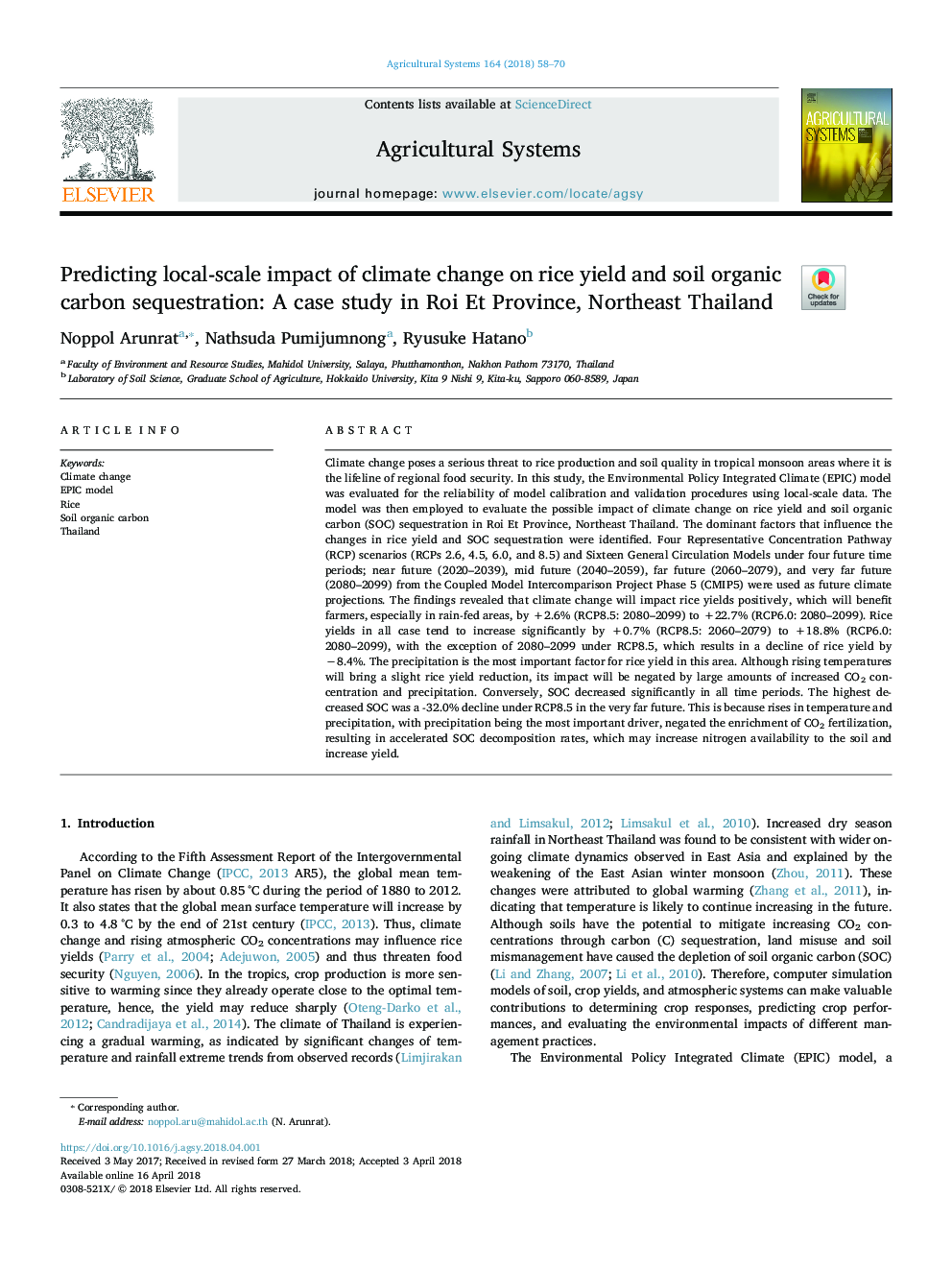| Article ID | Journal | Published Year | Pages | File Type |
|---|---|---|---|---|
| 8874961 | Agricultural Systems | 2018 | 13 Pages |
Abstract
Climate change poses a serious threat to rice production and soil quality in tropical monsoon areas where it is the lifeline of regional food security. In this study, the Environmental Policy Integrated Climate (EPIC) model was evaluated for the reliability of model calibration and validation procedures using local-scale data. The model was then employed to evaluate the possible impact of climate change on rice yield and soil organic carbon (SOC) sequestration in Roi Et Province, Northeast Thailand. The dominant factors that influence the changes in rice yield and SOC sequestration were identified. Four Representative Concentration Pathway (RCP) scenarios (RCPs 2.6, 4.5, 6.0, and 8.5) and Sixteen General Circulation Models under four future time periods; near future (2020-2039), mid future (2040-2059), far future (2060-2079), and very far future (2080-2099) from the Coupled Model Intercomparison Project Phase 5 (CMIP5) were used as future climate projections. The findings revealed that climate change will impact rice yields positively, which will benefit farmers, especially in rain-fed areas, by +2.6% (RCP8.5: 2080-2099) to +22.7% (RCP6.0: 2080-2099). Rice yields in all case tend to increase significantly by +0.7% (RCP8.5: 2060-2079) to +18.8% (RCP6.0: 2080-2099), with the exception of 2080-2099 under RCP8.5, which results in a decline of rice yield by â8.4%. The precipitation is the most important factor for rice yield in this area. Although rising temperatures will bring a slight rice yield reduction, its impact will be negated by large amounts of increased CO2 concentration and precipitation. Conversely, SOC decreased significantly in all time periods. The highest decreased SOC was a -32.0% decline under RCP8.5 in the very far future. This is because rises in temperature and precipitation, with precipitation being the most important driver, negated the enrichment of CO2 fertilization, resulting in accelerated SOC decomposition rates, which may increase nitrogen availability to the soil and increase yield.
Related Topics
Life Sciences
Agricultural and Biological Sciences
Agricultural and Biological Sciences (General)
Authors
Noppol Arunrat, Nathsuda Pumijumnong, Ryusuke Hatano,
